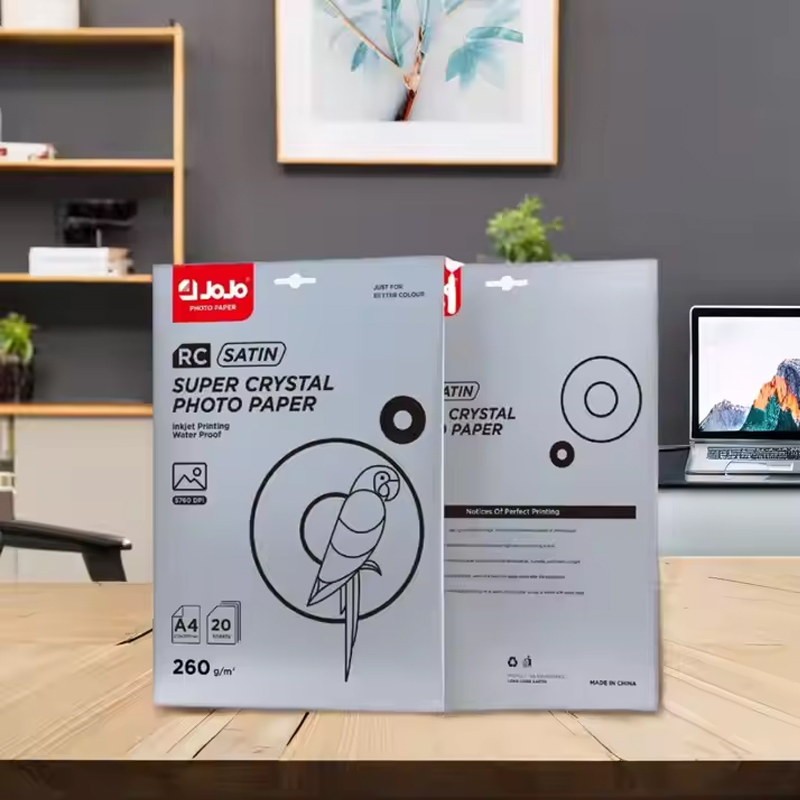If you need any help, please feel free to contact us
Fullcolors Photo Paper: Why Your Prints Pop
Creating vivid printed images depends on more than a high-resolution file or a good printer. The materials used, especially the paper itself, can determine whether photos look flat or come alive with depth and clarity. Fullcolors Photo Paper and Glossy Jojo Paper have been developed to help users achieve consistent results across a variety of printing projects, whether for professional displays, marketing materials, or personal keepsakes.
By understanding the practical qualities of these papers, it becomes easier to select the right combination of surface, weight, and coating to bring out the nuances of your images.

Surface Coating and Color Performance
One of the core features that distinguishes Fullcolors Photo Paper is its specialized surface coating, designed to handle a broad color spectrum. This coating allows each droplet of ink to remain near the surface of the sheet rather than being absorbed too deeply. As a result, images maintain higher contrast and better separation between tones, supporting both neutral grays and vibrant hues.
Glossy Jojo Paper uses a similar approach, with an added gloss layer that enhances reflectivity and provides a smooth finish. For photographers and designers who want a polished look, gloss surfaces can help create a sense of depth by reflecting light evenly. While gloss papers are sometimes thought to be more suitable for colorful images, they can also improve the definition of black-and-white prints, especially in controlled lighting.
When choosing between matte and glossy surfaces, it helps to consider how the final print will be viewed and handled. Glossy Jojo Paper tends to show fingerprints more readily but also offers greater perceived sharpness under display lighting. Fullcolors Photo Paper can be selected in gloss or semi-gloss finishes, providing flexibility for projects that require a specific visual effect.
Ink Compatibility and Drying Time
Compatibility with printer inks is another important factor in producing images that look as intended. Fullcolors Photo Paper is manufactured to work with water-based dye inks commonly used in EPSON, HP, and CANON printers. Because the coating is optimized for rapid ink absorption and stabilization, prints dry quickly and can be handled sooner after printing without smudging.
Glossy Jojo Paper shares this fast-drying capability, which supports production environments where time is limited and multiple prints need to be processed in sequence. Drying speed is especially relevant for borderless printing applications, where excess ink from edges can otherwise transfer to adjacent sheets.
When printing high-density images, such as deep shadows or saturated colors, the balance between absorption and drying becomes even more critical. Papers that are too absorbent can dull the colors, while those that resist ink penetration entirely can prolong drying. Both Fullcolors and Glossy Jojo options are designed to maintain this balance, making them suitable for large image runs as well as one-off prints.Weight and Handling
The feel of paper can affect how a print is perceived by a customer or end user. Heavier papers help create a fuller feel and help prevent curling, especially in humid environments. Full-color papers are available in different weights to meet specific needs for posters, frames, and other applications.
High-gloss Jojo papers are often used for marketing materials and displays because their weight and stiffness allow for professional mounting and lamination. While heavier papers can increase shipping costs, they also provide a more premium experience when handling. For projects that need to balance cost and appearance, choose mid-weight papers that offer durability and ease of use.
Storage conditions should also be considered when handling heavier coated papers. Both types of paper should be stored flat in a cool, dry environment to prevent warping and preserve the integrity of the coating. Allowing the paper to acclimate to the temperature of the print room before use can also help reduce static and improve the printer's paper feed performance.
Practical considerations for consistent results
Even high-quality materials require thoughtful preparation and workflow practices. To get the most out of Full Color and High Gloss Jojo Papers, the printer should be calibrated for the paper type you choose. Many manufacturers, including JOJO Paper, provide ICC profiles or recommended settings for optimized color reproduction.
Before starting a larger production run, making test prints on smaller sheets can help confirm that the desired color balance and density has been achieved. In addition, wearing protective gloves when handling freshly printed paper can reduce markings and maintain the clarity of highlights.
It is also useful to record your preferred settings for each project. When reprinting images in the future, referring to previous records of paper type, printer configuration, and drying time will help maintain consistency from batch to batch.

 English
English Español
Español 中文简体
中文简体 Português
Português

